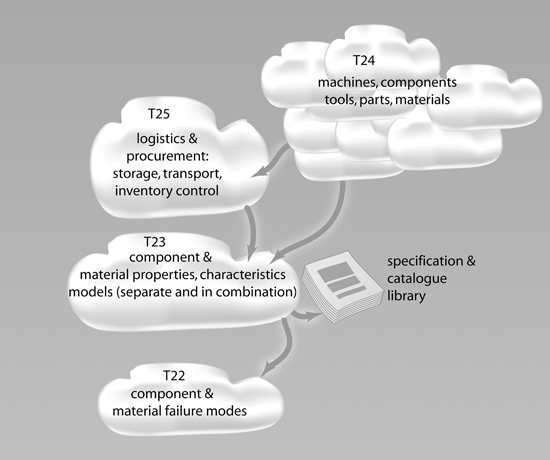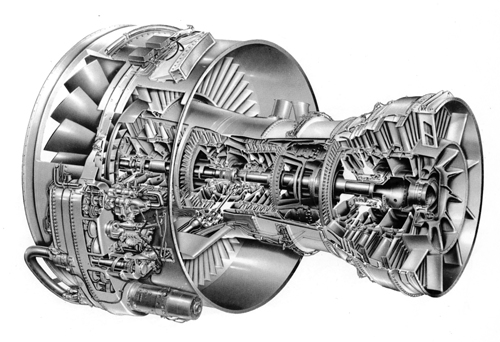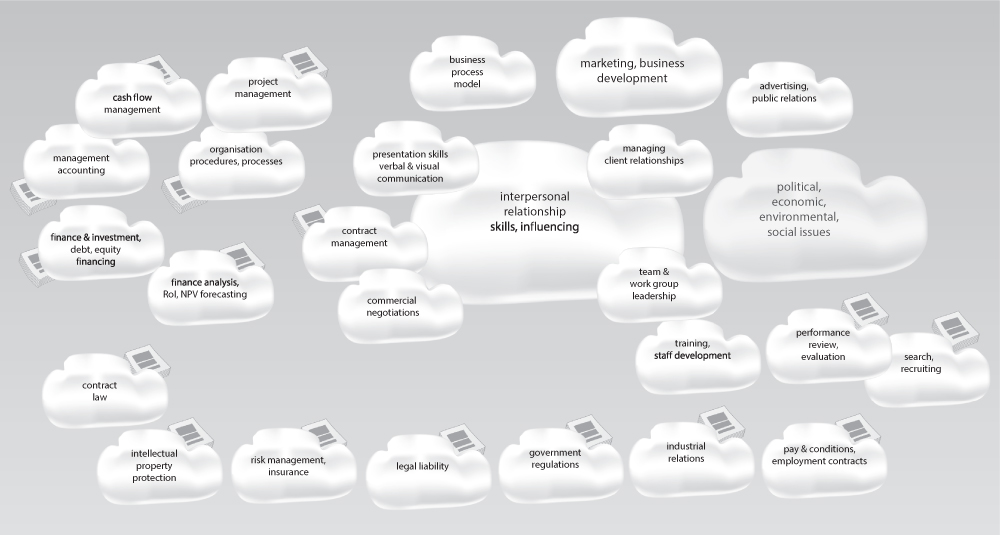Chapter 11
Well, a lot of the problem solving here seems to be the people side. Getting who you need when you need and knowing who knows what . . .1
Many novice engineers think they have to know their technical ‘stuff’ or they could lose the respect of their peers and boss. Asking for help is a sign of giving up; a kind of cheating, a last resort. They believe that if they don’t know it, one should look it up online, in texts, at the library, or even in Wikipedia (if they can get away with it), and they find it hard to admit that they don’t know something.
A young mechanical engineer explained some of the things she found that she had to learn:
Practicality, how it all works, what a valve looks like, how you pull a pump apart. The next most important thing is where you fit in. Like others when I first started, I didn’t think that I fitted in anywhere. I didn’t have a job that no one else could do. As the scheduler, I had no idea how long it took to put in foundations. I had to ask somebody and figure out who to ask. I had a terrible lack of knowledge of actual ‘stuff’.
Good engineers realise that knowledge is distributed in the minds of different people; it is not necessary to know everything; in fact, it is impossible. Knowing how to find someone to ask and how to get them to help is essential. Admitting ignorance is smart but takes courage. Every one of us has experienced feelings of utter ignorance and helplessness.
Most of the working knowledge needed by engineers lies in the minds of the people who work in the engineering enterprise. Vital knowledge lies with many non-engineers, including end-users. Accessing that knowledge effectively is the key to success in engineering.
By the end of this chapter, you will appreciate just how much more there is to learn. You will always be learning something new every day, which means that you will never stop learning. Engineering knowledge is limitless in its scope and detail, and there is no way of knowing what you are going to need around the next corner of your career.
Mapping knowledge
One of the first knowledge categories required in an engineering enterprise is an understanding of the different tools, systems, components, and materials that could be used—what they are called, what they look like, what each one does, its function in a particular context, and some understanding of its value or cost. This understanding does not include any detailed knowledge of how it is actually made. You do not need to know how a component or material is made in order to be able to use it. However, some knowledge of its manufacture and design can be helpful in understanding its limitations and identifying possible faults or failures. For example, it is not difficult to appreciate that a screw made from steel is likely to be much stronger than a screw made from plastic. However, it is more difficult to appreciate that a screw made from heat-treated alloy steel is likely to be much stronger than one made from mild steel without any special treatment, partly because they may look and feel almost identical.
Another related body of knowledge helps an engineer acquire the tools, machines, component parts, or materials—which firms supply them, in what quantities, and with what delivery times? Which firms hold them in stock locally? How much do they cost in a given quantity? How long do they have to be ordered in advance? Can the supplier deliver them or does transportation need to be arranged? Which firms provide helpful technical information, application knowledge, expert advice, or training? How is the machine, tool, component, or material safely transported and stored without affecting its performance when it is used? How long can the component or material be stored and in what conditions? How heavy is it? How can it be handled safely? Do these electronic components have to be protected from electrostatic charge? How long will chemicals that modify concrete properties retain their properties when stored in extremely high summer temperatures? Chapter 3 explains how a novice can start building this knowledge base while looking for work.
A third category of knowledge related to tools, machines, component parts, and materials is called ‘detailed technical information’, usually represented by technical data sheets and other technical information that enables an engineer to decide whether it will adequately perform the required function. This kind of knowledge also enables an engineer to predict the performance of an artefact or service that uses the component or material, how much it will cost, when it is likely to be available, the environmental and safety consequences of using the component or material, what kind of training will be needed by people who are going to work with the component or material, what kind of protective equipment they will need, and what kind of safety precautions must be taken. Apart from the knowledge of information specific to each item, engineers also need to know about combinative effects. Can tool X be used with material Y?
What happens if fluid F flows through pipes made from P, lined with R and S, controlled by valves made from V and W? A new fuel distribution system at a major Australian airport had to be scrapped and rebuilt after it was discovered that an anti-corrosion coating used in some of the pipelines could contaminate jet fuel. In cold weather, water had condensed from air trapped in fuel pipelines and tanks. The water became highly corrosive as it absorbed components of additives and contaminants in the fuel. Bacteria grew on the interface between the fuel and the water and produced highly corrosive waste products. Knowledge of components and materials must include knowledge of how to use them in combination with each other.
This takes us on to a fourth category of component and material knowledge: failure modes. Knowing how to anticipate and recognise failures is critical knowledge for an engineer to possess. An engineer must be able to predict the performance of a product or service before it is built or delivered. To do this, an engineer needs to ensure that the relevant tools, machines, materials, and components will be used well within their capacity. An engineer needs to anticipate the consequences of accidents and emergencies, even the consequences of failures in other parts of the product. Will a certain material have sufficient strength to withstand the forces applied during manufacture and assembly, as well as during transport to its final destination? Furthermore, when tools, machines, components, or materials fail unexpectedly, an engineer can use knowledge of failure modes to diagnose the causes and devise improvements to prevent future failures.
I have represented these four aspects of knowledge in Figure 11.1. Lines with arrows on the map indicate possible dependencies. For example, knowledge of logistics and procurement requires basic knowledge of the tools, machines, components, and the materials themselves, as does any detailed knowledge of properties, characteristics, and models. Knowledge of properties, characteristics, and models is essential in order to understand and predict failure modes. Sheaves of paper represent substantially written knowledge; the rest is constructed in the minds of engineers and skilled technicians, combined with their personal notes and work diaries.

Figure 11.1 Mapping knowledge of tools, machines, components, and materials used in an engineering enterprise. Arrows convey typical associations linking fields of knowledge.
I chose to represent categories of knowledge with clouds. A cloud is diffuse and has no clear edges or boundaries, just as knowledge classifications have fuzzy, ill-defined boundaries. It is difficult to capture a cloud, and, similarly, it is difficult to appreciate or fully summarise a particular area of knowledge. You can pass right through a cloud at night without even being aware of it. A person who lacks awareness can be surrounded by extremely knowledgeable people and not notice that they possess such valuable knowledge. Many Australian Aboriginal elders have a vocabulary of up to 300,000 words, ten times more than the average professor of English. Yet, for the first 200 years after they arrived in Australia, Europeans thought that Aboriginals were ignorant, uncivilised, primitive people. The fourth idea captured by the idea of a cloud is that you cannot tell how far into the cloud you are seeing from the outside, nor how thick the cloud might be. Unless you already have the required knowledge, it is difficult to understand how much you don’t know. Fifth, even when you have some knowledge, when you are partly immersed in the cloud, you cannot see how much more knowledge you need to learn, just as you cannot see how much further into the cloud it is possible to penetrate.
Lastly, once you are fully in the cloud, it is very difficult to see the world outside. In the same way, once you become totally immersed in a particularly specialised aspect of knowledge, it can become more difficult to appreciate what is happening in the world around you. You can only see the outside world within the framework of the knowledge that preoccupies your mind.
Most engineering enterprises work with a range of products and services using different components and materials. Think about a layered map of clouds: each layer maps knowledge about one of the products, processes, or services.
So far, our map has included only four aspects of engineering knowledge: there are many more to come (Figure 11.2).

Figure 11.2 Knowledge map extended.
Abstract knowledge, both mathematics- and science-based, from formal education
Product definition, including how it works and how each of the components contributes to product performance
Abstract model of an object, organism, structure, or physical system needed to predict performance
Documentation: ways to represent the internal structure and operation of objects, structures, organisms, and physical systems
Manufacturing and assembly methods
Design for manufacture: ways to design products that result in economic manufacture and assembly in a given context
Knowledge of components and materials
Knowledge of component and material properties, both individually and in combination
The knowledge embodied in existing designs is also critical. For example, for a jet engine, here are some detailed aspects of embodied knowledge (Figure 11.3):

Figure 11.3 Large bypass ratio jet engine, typical on a contemporary passenger jet aircraft. The turbine at the rear of the engine is at the right-hand end of the picture (Rolls Royce).
Turbine blade shrouding, gas leakage, blade vibration, blade cooling, turbine inlet temperature, and pressure;
Minimisation of turbine blade tip clearance, location of shaft bearings close to turbine discs to limit shaft deflection, and the use of turbine inlet nozzle vanes as the bearing support structure within the turbine housing; and
Adjustment of seals and clearances to regulate pressure and flow of cooling air to the internal engine components, such as bearings and turbine discs, handling of engine axial loads, and the effects of cooling air pressure on lubricant flow in the bearings.
The accumulation of all this technical knowledge is a dominant constraint on the capacity of engine designers. It takes young designers many years to accumulate this knowledge within the firm as they perform their design work; it cannot be obtained from other sources. Younger designers will acquire detailed knowledge in different technical aspects, but the design cannot be completed without taking the interactions between all these aspects into account (Figure 11.4).

Figure 11.4 Nozzle guide vane and turbine blades showing cooling airflow. Modern turbine blades have many more holes and cooling air passages and operate in gas temperatures well above the melting point of the material (Rolls-Royce).
This is not easy when the knowledge of all these different aspects is shared between many different specialist designers, and the design process is constrained by limited time.
Distributed knowledge
The research provides 37 types of specialist engineering knowledge and 27 types of general organisational knowledge. Two maps represent these, shown in Figures 11.5 and 11.6.

Figure 11.5 Aspects of technical knowledge used in engineering enterprises.

Figure 11.6 Aspects of organisational knowledge used in engineering enterprises. (RoI is return on investment; NPV is net present value.)
Note that these maps do not distinguish between the knowledge contributed by engineers and all the other people such as contractors, accountants, clients, end-users, and government regulators. As an engineer, it helps to know about all the different kinds of knowledge needed in an engineering enterprise, even though you will rely on other people for much of it.
The maps may seem complex. Then remember that the maps have to be replicated for every single product, service, and information package provided by an engineering enterprise. While there are areas of common knowledge between different products and services, there are also many differences. Think of these maps in layers, partly merged, partly separated, a different layer for every product and service. The layers must be subdivided yet again for producing the same product or service in different locations, or in different countries. This complexity explains why it is so difficult for any one individual to know everything, even for a single product or service.
By now, perhaps you can appreciate that even in a lifetime, it is not possible for an engineer to get to know all this ‘stuff’.
Most of the technical knowledge that engineers use is unwritten knowledge learnt informally in the workplace. Written knowledge is shown as a sheaf of papers on the maps.
Nearly every aspect of technical knowledge is required somewhere along the way in nearly every enterprise.
This mostly unwritten knowledge is extremely difficult to transfer from one person to another. It is sometimes referred to as ‘sticky knowledge’.
Therefore, the only way to access it quickly is by arranging for the people who have the knowledge to share it through skilled and knowledgeable performances. For example, production supervisors possess much of the knowledge about controlling the production environment, as well as managing safety, maintaining quality, and minimising errors. Therefore, when it comes to the choice of production methods and the design of production facilities, engineers need to work with production supervisors, as they are much more knowledgeable.
The strongest evidence for this hypothesis—that knowledge is distributed among people in an engineering enterprise—came from observations by young engineers that they spend most of their time in social interactions with other people in the same enterprise. Most of these interactions concern technical and specialised knowledge. The real surprise was that the amount of time that young engineers spent on social interactions was almost exactly the same as the proportion shown in many previous studies of more experienced engineers. Here was the evidence that social interactions are the means by which this knowledge is shared, largely by coordinating skilled performances by people who held the knowledge in their heads. This explains why engineers spend so much of their time coordinating technical work performed by other people.
Distributed cognition
By now, we understand that good engineers know that it’s better to call in an expert than to try to acquire specialised technical expertise in a hurry.
Here, we take this idea one step further. The notion of distributed cognition implies that new ideas and knowledge emerge from the social interactions of people with different and complementary expertise, knowledge, and skills. Together they develop new shared understandings that could never have arisen without those discussions. As they do so, the meanings of words are constantly changing, often imperceptibly, as the participants develop new understandings and, through listening to each other, see new associations with the words that were out of their reach before.
While many engineers see social interactions as a non-technical aspect of their work, in reality, these social interactions involve highly technical discussions. Much of this occurs outside of working hours in relaxed social settings, and highly technical conversations can often be intermixed with jokes and speculation about upcoming sporting events and ‘small talk’.
Figure 11.7 shows part of the map of technical knowledge adapted from Figure 11.5. A female engineering graduate has just joined the enterprise. She’s good at abstract science and mathematics, shown in the top left-hand corner. She can use mathematical models and computer software, but not in isolation. She needs help to come up with realistic estimates for the parameters that define her models.

Figure 11.7 A graduate (female, centre) with abstract science, mathematics, and modelling knowledge has joined several other engineers in the enterprise that possess different aspects of technical knowledge. Between them all, if they collaborate, they can access all the knowledge they need.
There are several other engineers that cover the other aspects of the technical knowledge needed by the enterprise. Our young graduate will need to spend a lot of time working with them and figuring out realistic estimates for the mathematical models at the centre of her work. She soon learns that almost everything she needs to know is already known by someone else in the organisation; it is just a matter of finding out who that person is.
Engineering knowledge, therefore, is a social network.
References and Further Reading
Korte, R., Sheppard, S. D., & Jordan, W. (2008, June 22–26). A Qualitative Study of the Early Work Experiences of Recent Graduates in Engineering. Paper presented at the American Society for Engineering Education, Pittsburgh.
Trevelyan, J. P. (2014). The Making of an Expert Engineer. London: CRC Press/Balkema - Taylor & Francis, Chapter 5.
